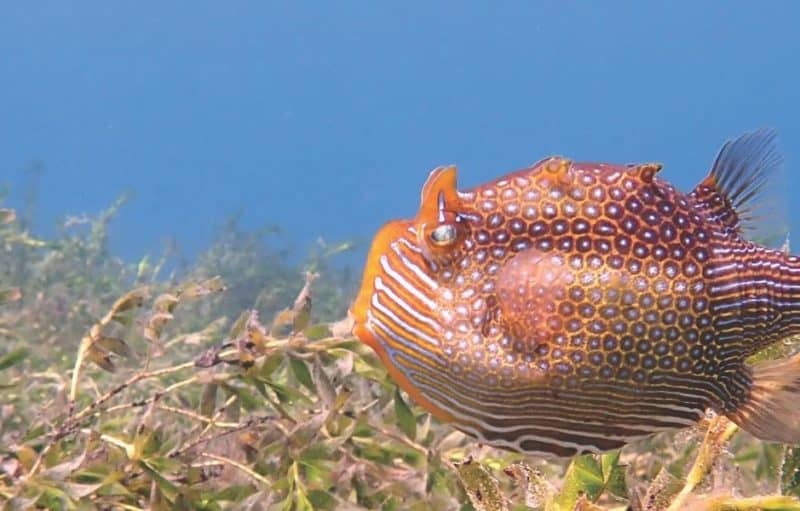PARK WATCH September 2019 |
Our ReefWatch Coordinator Kade Mills invites you on a quest in our newest marine citizen science project.
How well do you know your state emblems? You likely know our state mammal is the Leadbeater’s possum, and even that the helmeted honeyeater is our state bird. But did you know that our state marine animal is the weedy seadragon, sometimes known by its less glamorous moniker, the common seadragon?
The weedy seadragon is anything but common, as it is found only in Australia and only along the southern half of the country. It is one of the most iconic fish in these temperate waters, and we are fortunate to have a population in Port Phillip Bay, mostly spotted at Portsea Pier. While they are often seen around artificial structures, their natural habitat is along the edges of seagrass beds and rocky reefs covered in forests of brown kelp. They use their small fins to hover above the seabed, and their long ‘snouts’ to hoover up tiny little crustaceans.
Weedy seadragons are closely related to seahorses. Like seahorses, the males are responsible for looking after the eggs until they hatch. But while male seadragons use their long tails, which have a spongy area to attach up to 300 eggs during mating. After about two months the juveniles pop out, and by then they are around 20 millimetres long, fully formed and ready to go. Because they hatch fully formed, they are less likely to disperse over large distances than the larvae of other fish species. Recent genetic work indicates that there is limited gene flow between seadragon populations. This has implications on the local populations – if they were to disappear, they would be gone forever.
Marine pollution, habitat loss and degradation, climate change, illegal collection for trade, and entanglement in fishing debris all impact seadragon populations throughout their range. It has also been suggested that dredging in Port Phillip Bay in 2009, which led to larger swells and beach erosion at Portsea Pier, has altered the habitat, potentially affecting weedy seadragon numbers. We have no way of determining this, but it has highlighted how little we know about the population of seadragons that call Port Phillip Bay home.
ReefWatch’s latest marine citizen science project, Dragon Quest, aims to address this knowledge gap by cataloguing individual seadragons at dive sites throughout Port Phillip Bay.
To do this, we are collecting photos of weedy seadragons (along with the location and date taken). The pattern on the side of each seadragon is unique, like a human fingerprint, so we can use pattern mapping software to identify individual dragons. To date, over 40 divers have submitted hundreds of images for analysis, with 60 individuals identified at Portsea. Of these, 14 individuals were resighted – that is, images of the same individual were submitted for different dates. We have also seen the movement of an individual from Portsea to Sorrento – the first time this has ever been recorded.
With spring in the air and the water warming up, it is a perfect opportunity to swim with weedy seadragons – and if you capture a photo, remember to send it in to be recorded – email [email protected]. Divers that submit images of new individuals are being rewarded with their find being named after them. Who wouldn’t want to tell people they’ve given their name to a dragon?
If you have never seen this fascinating fish for yourself, join us during our Great Victorian Fish Count at Portsea on Saturday 7 December for a chance to swim with weedy seadragons and learn more about Victoria’s largest marine citizen science event. Bookings through Bayplay on (03) 5984 0888.
More
Find out more about our new Dragon Quest project here.
Did you like reading this article? Want to be kept up to date about this and other nature issues in Victoria? Subscribe to our email updates.
You can also receive our print magazine Park Watch four times a year by becoming a member. Find out more here.
